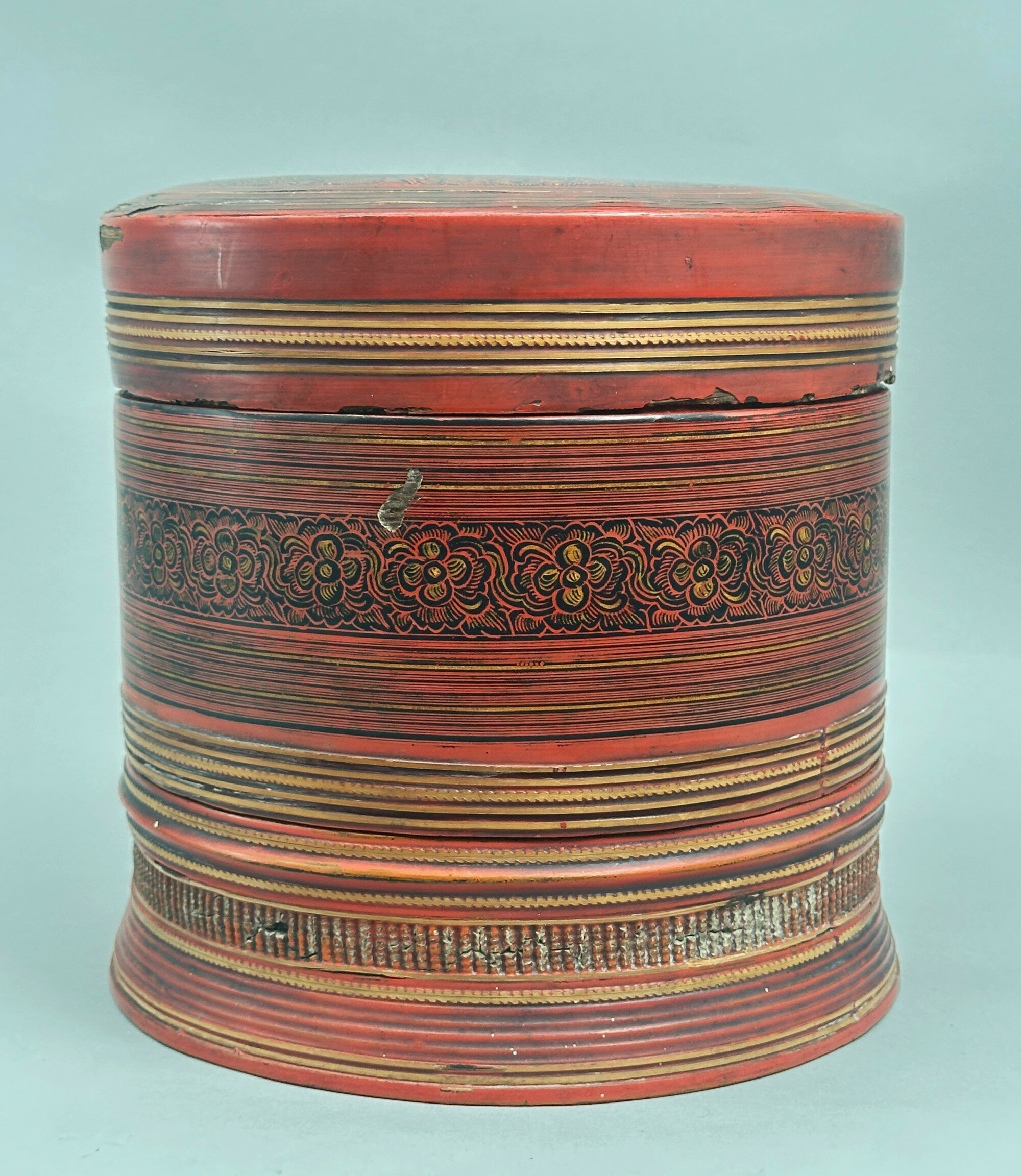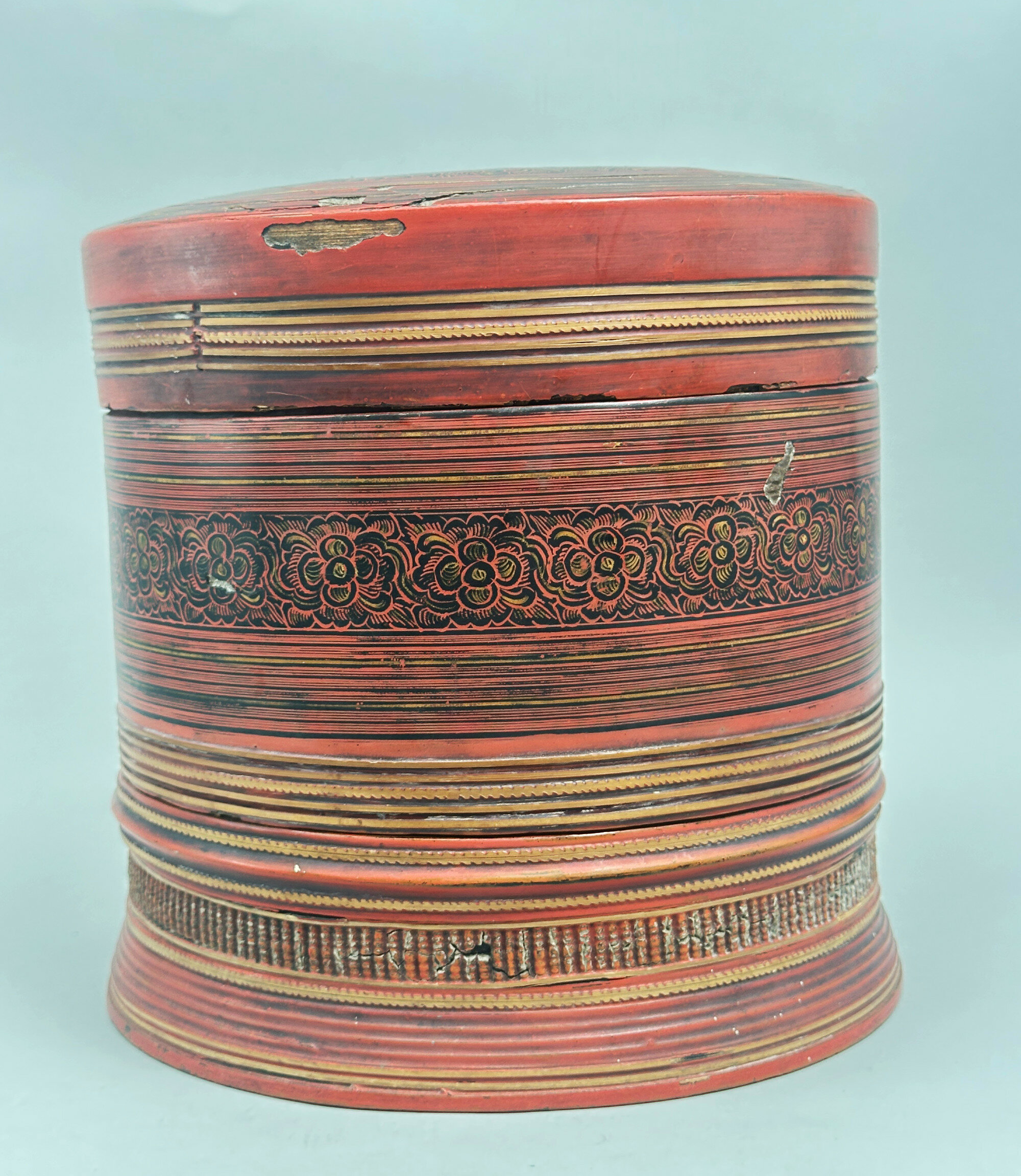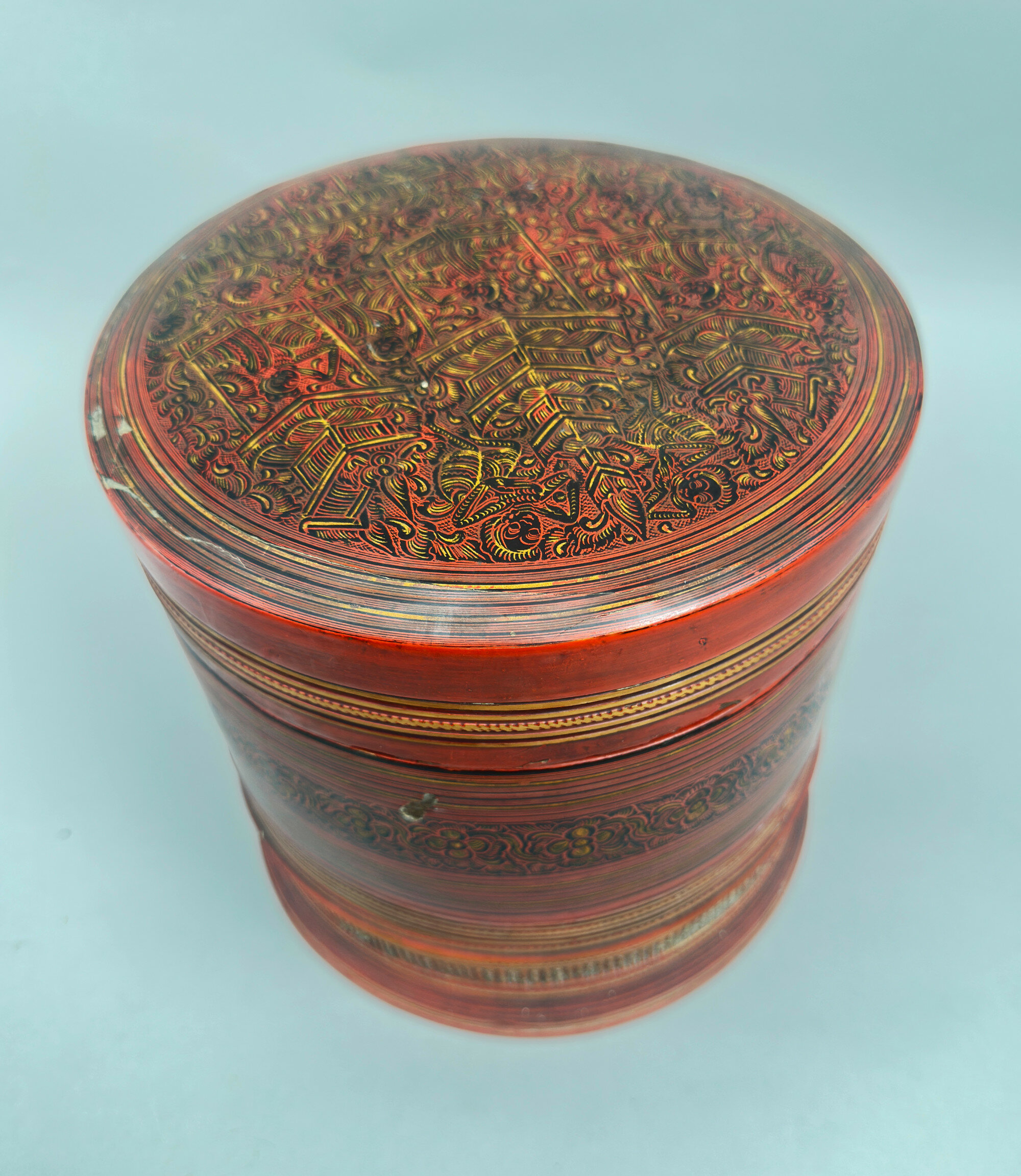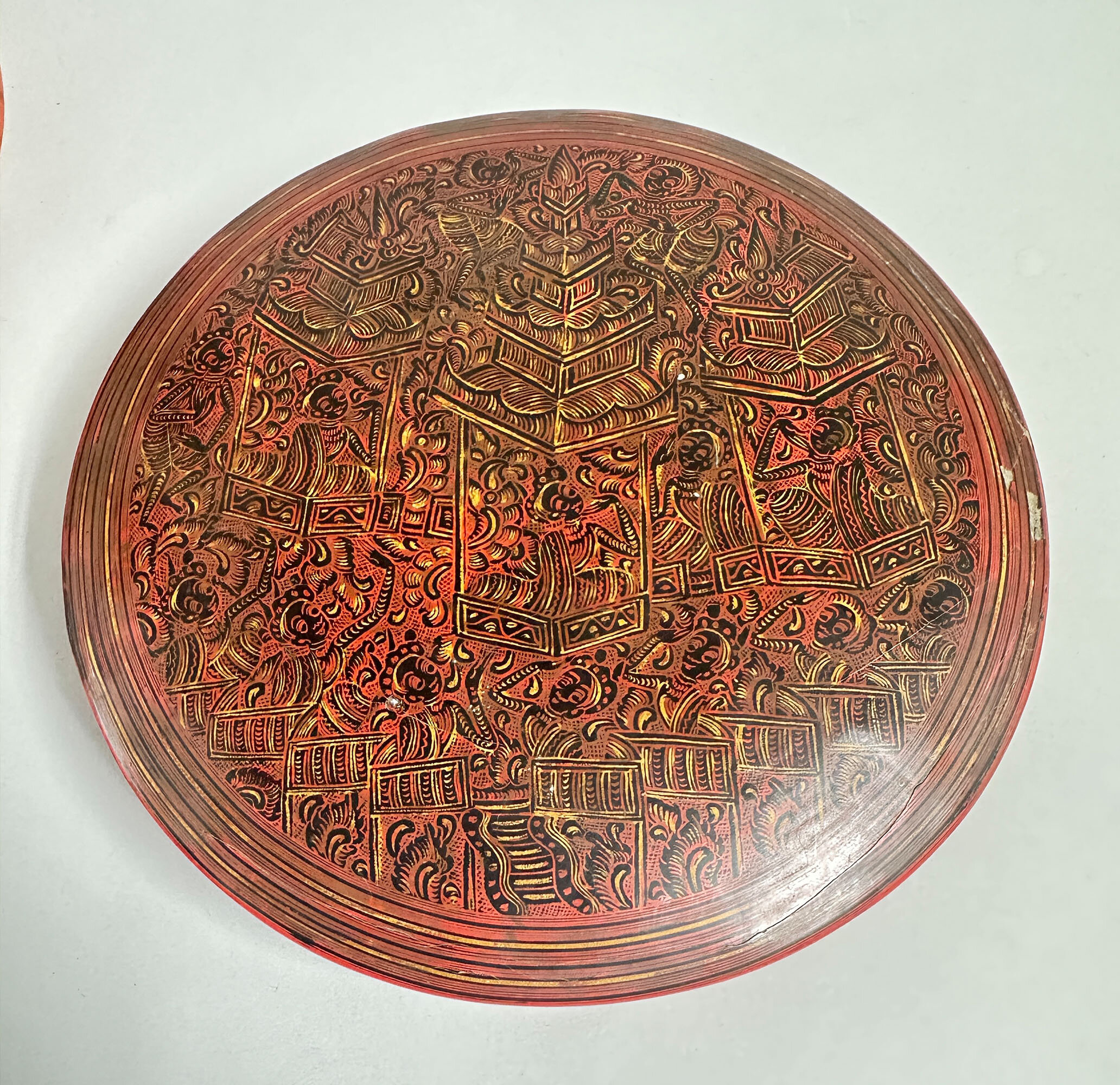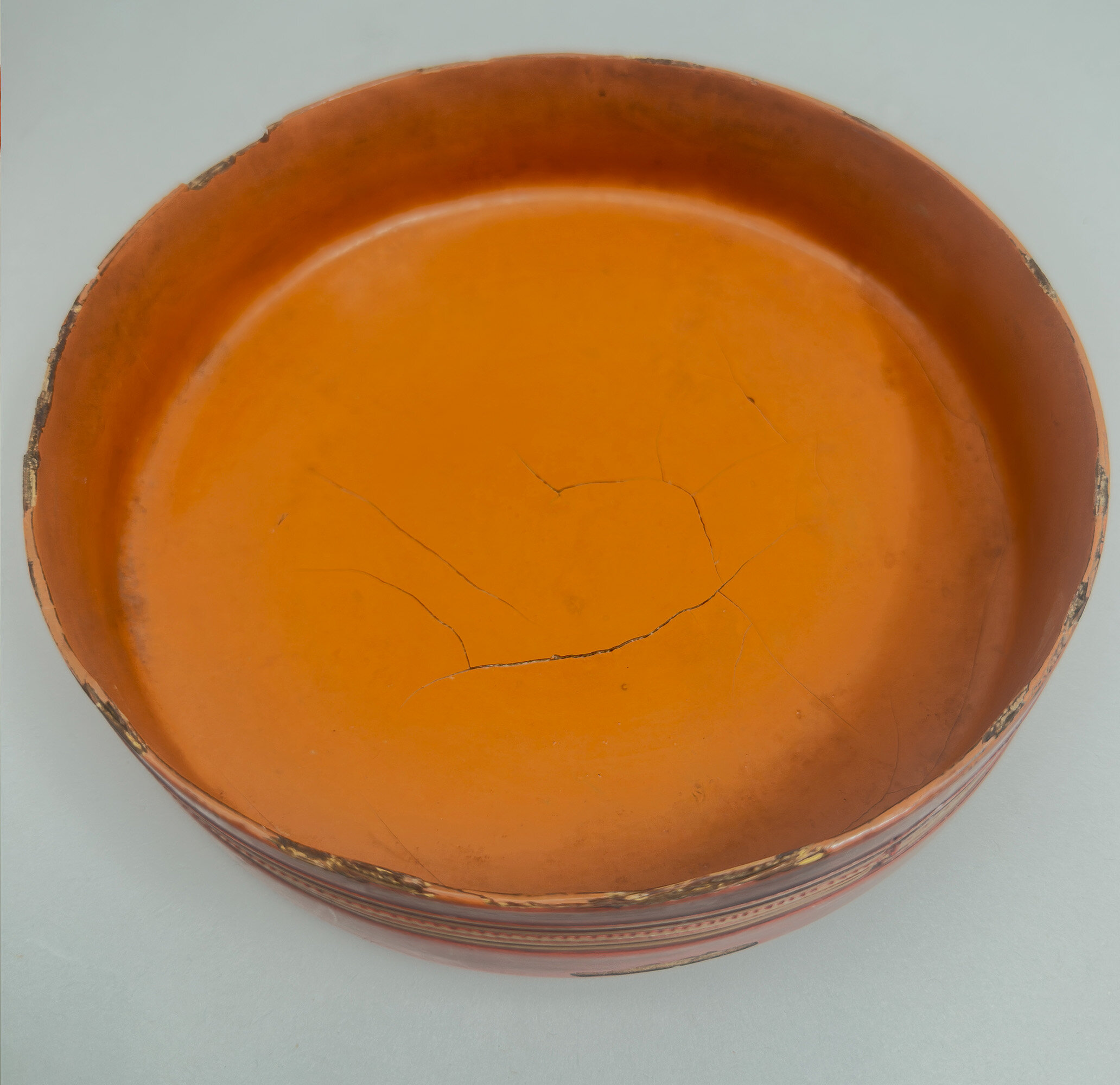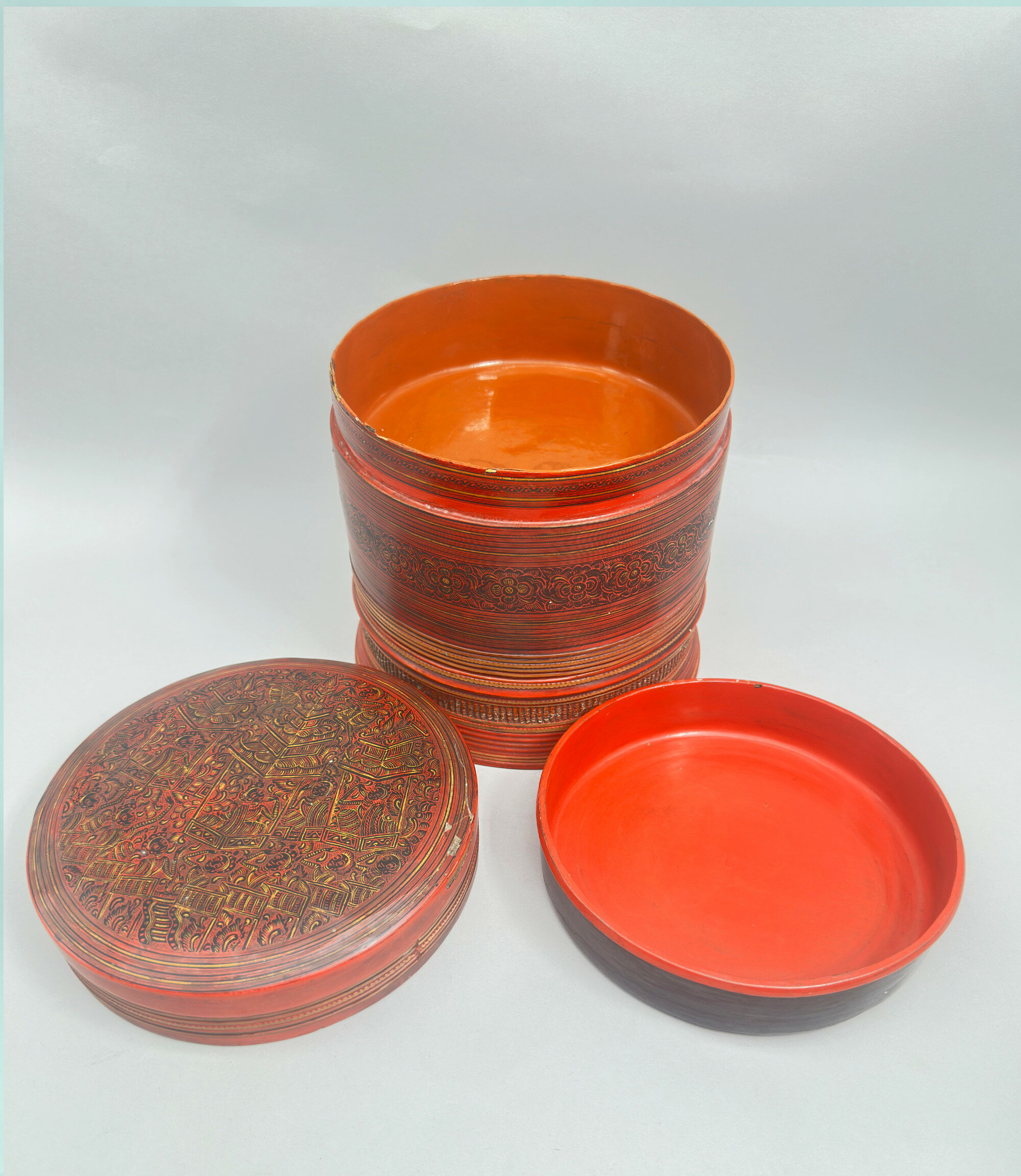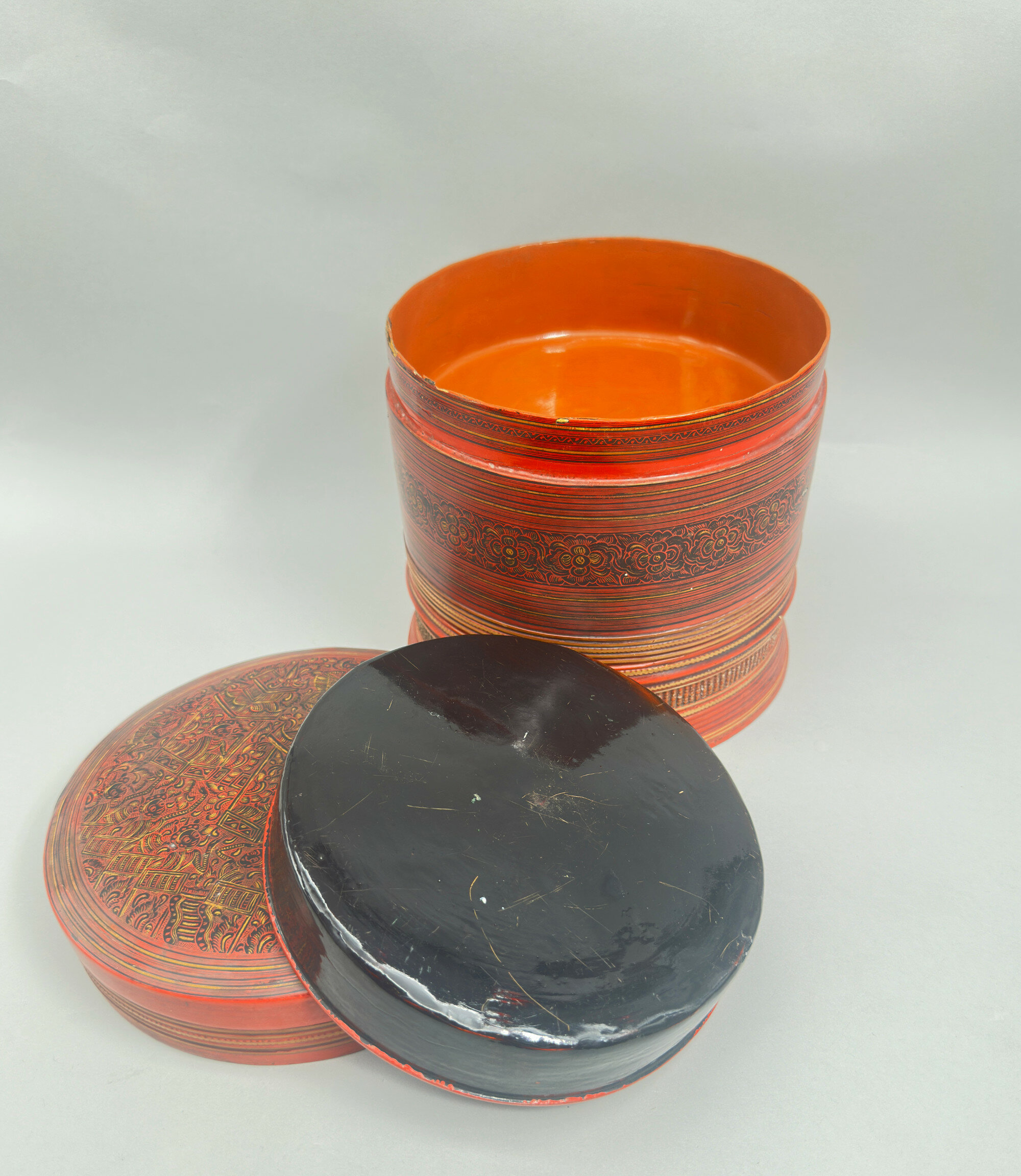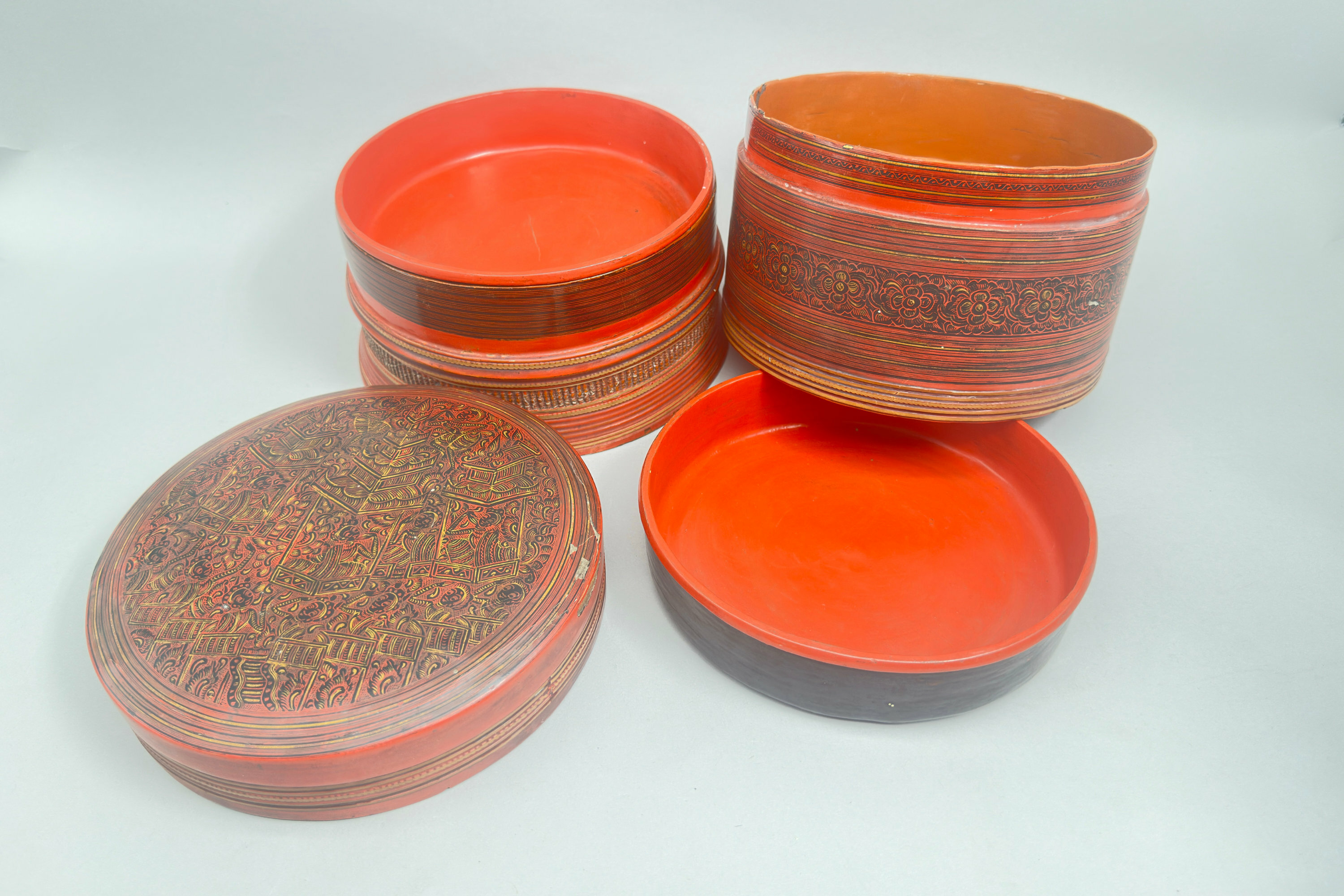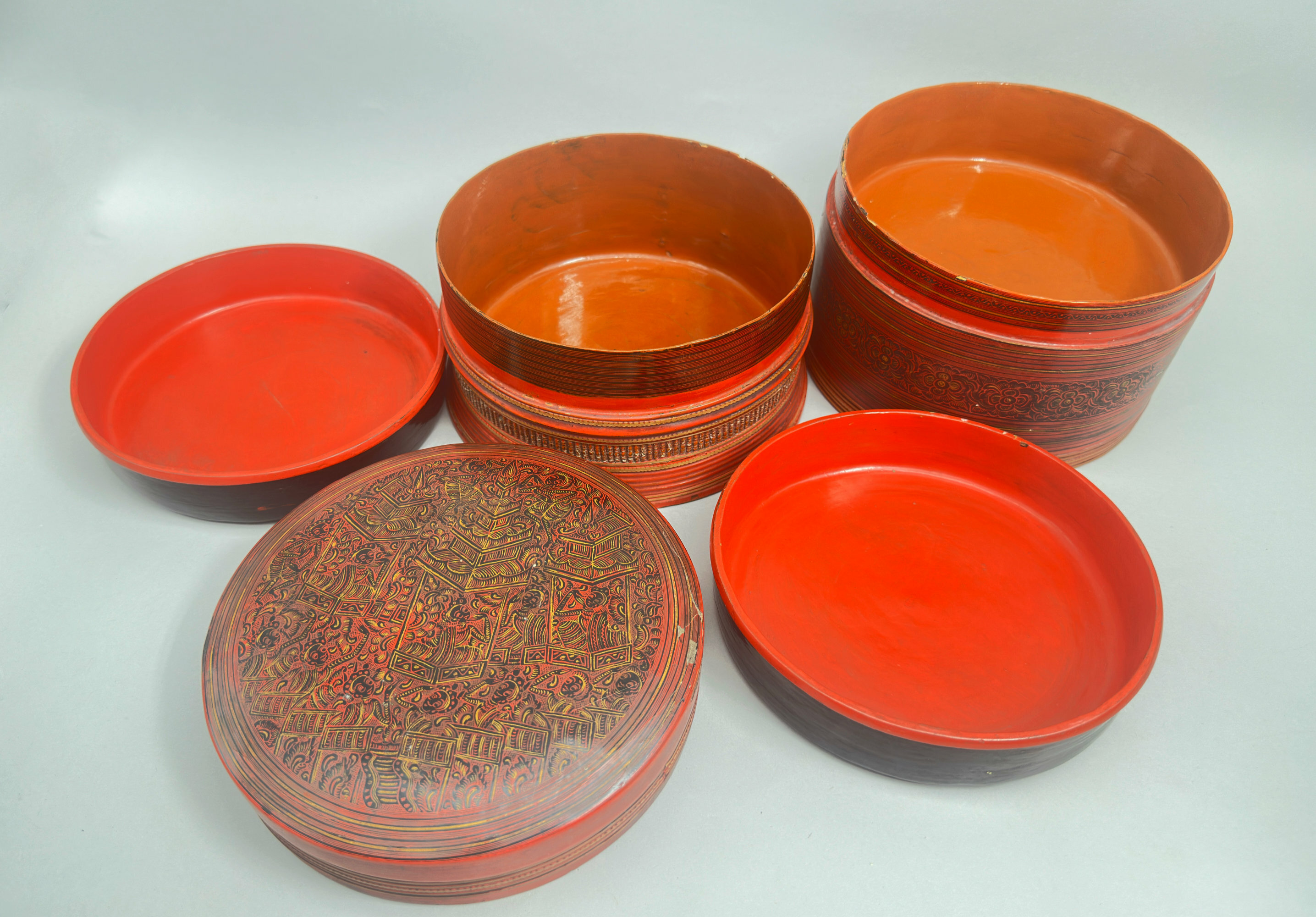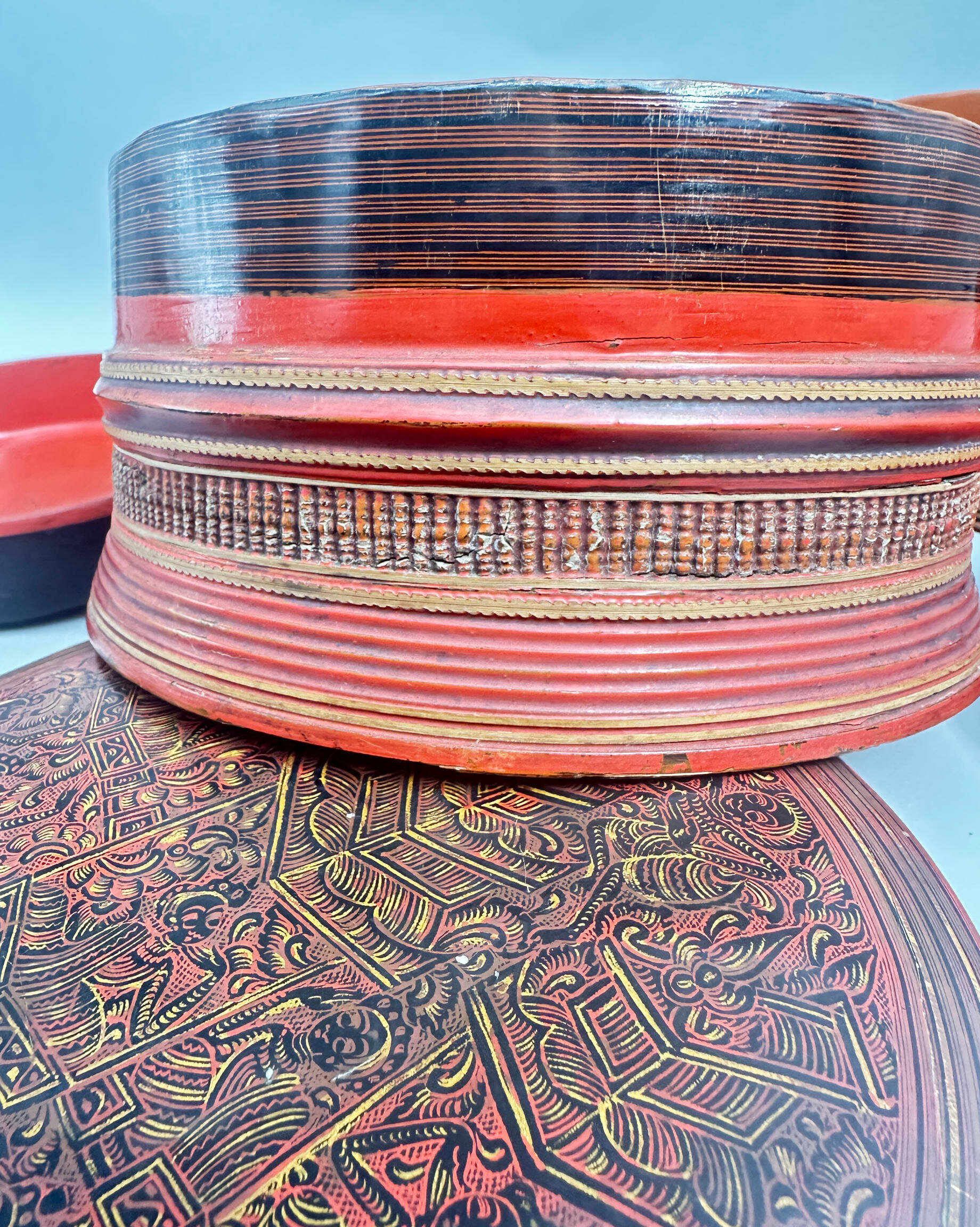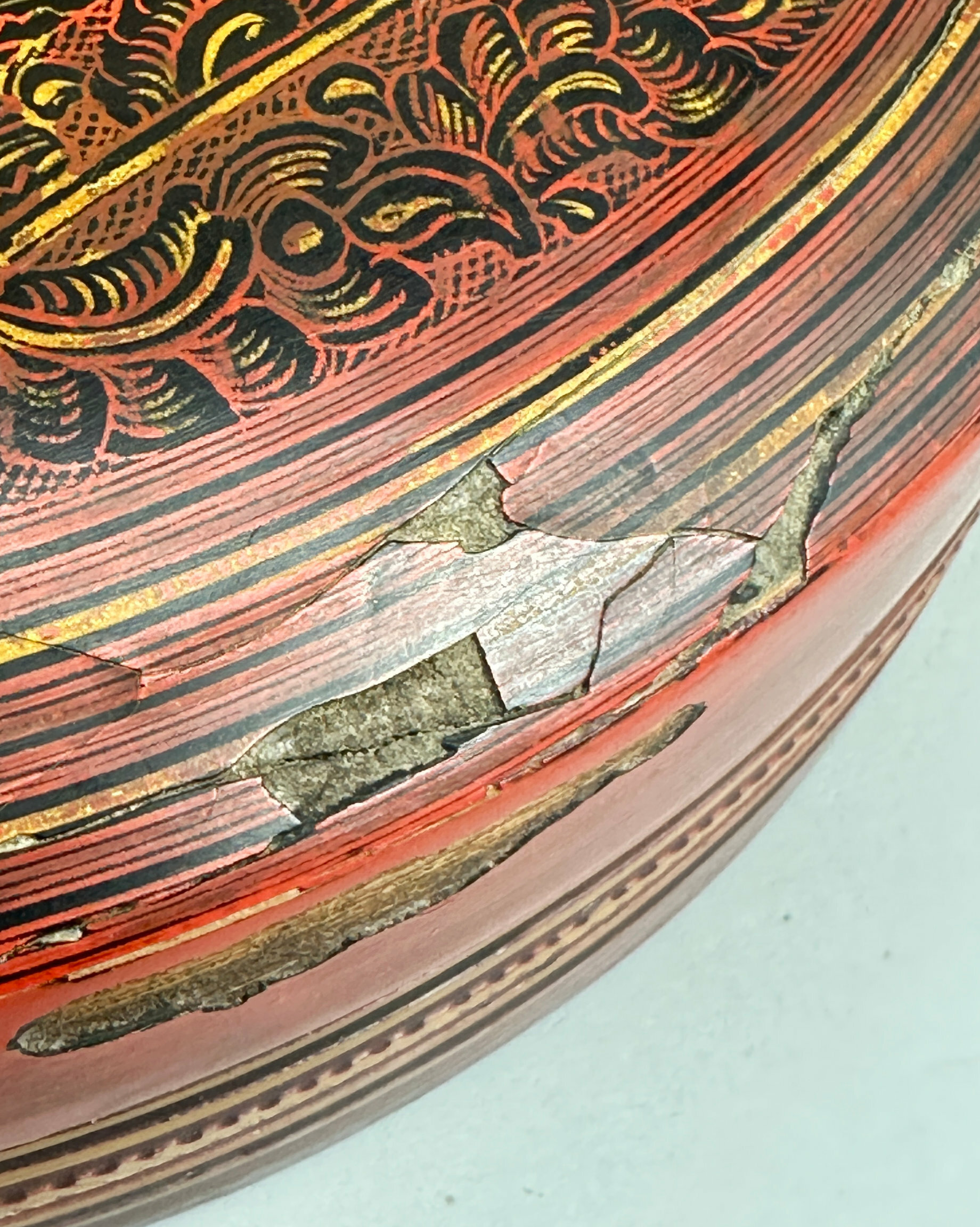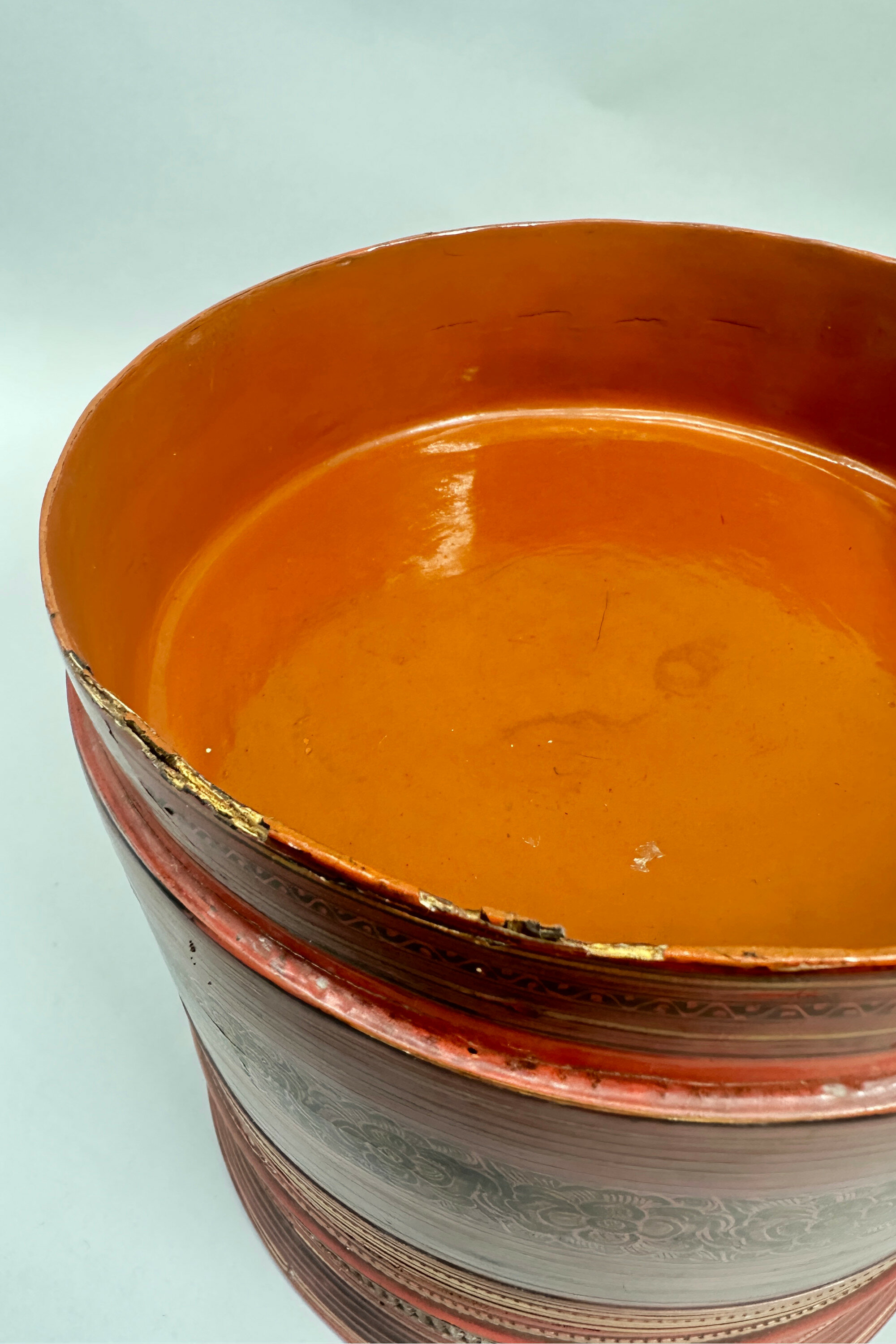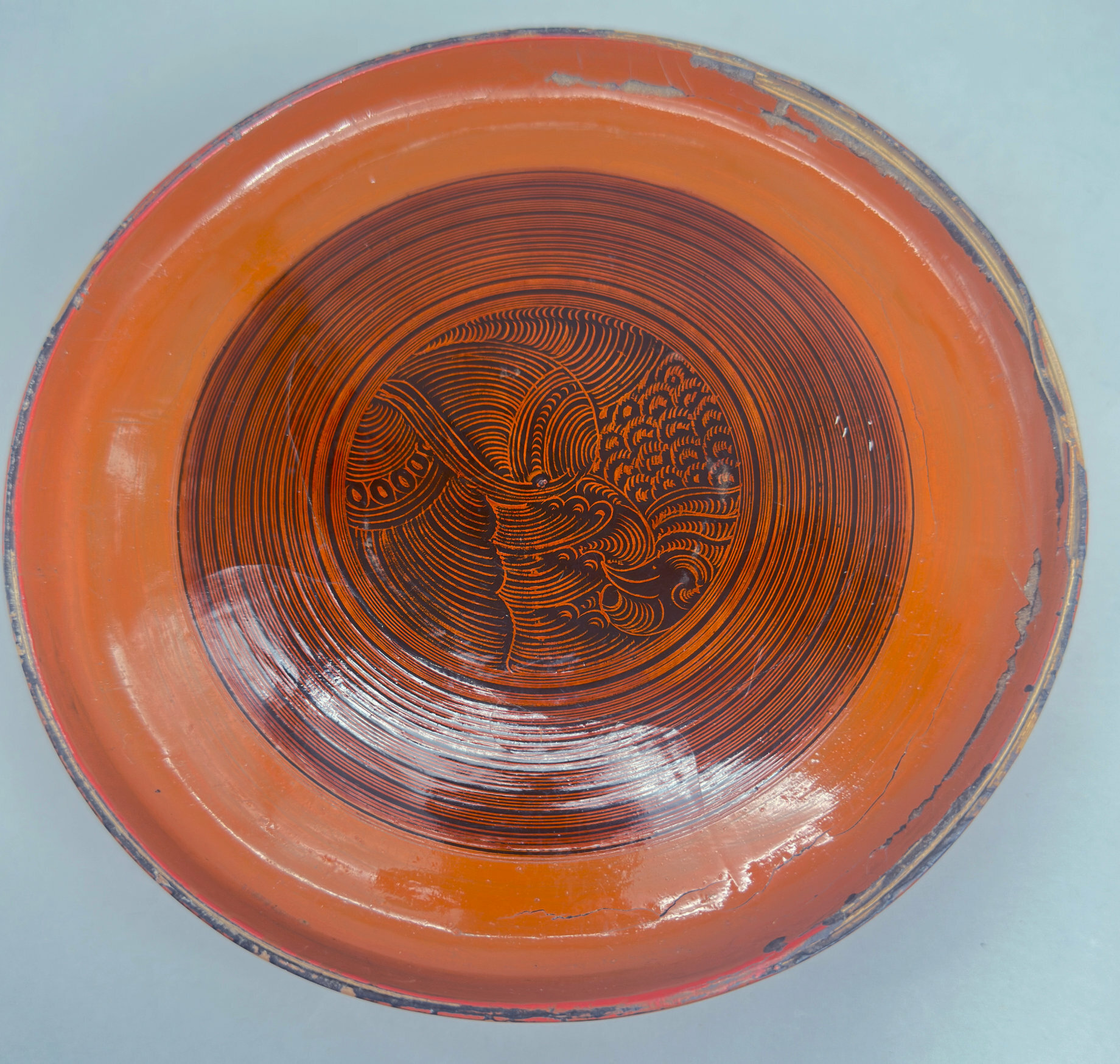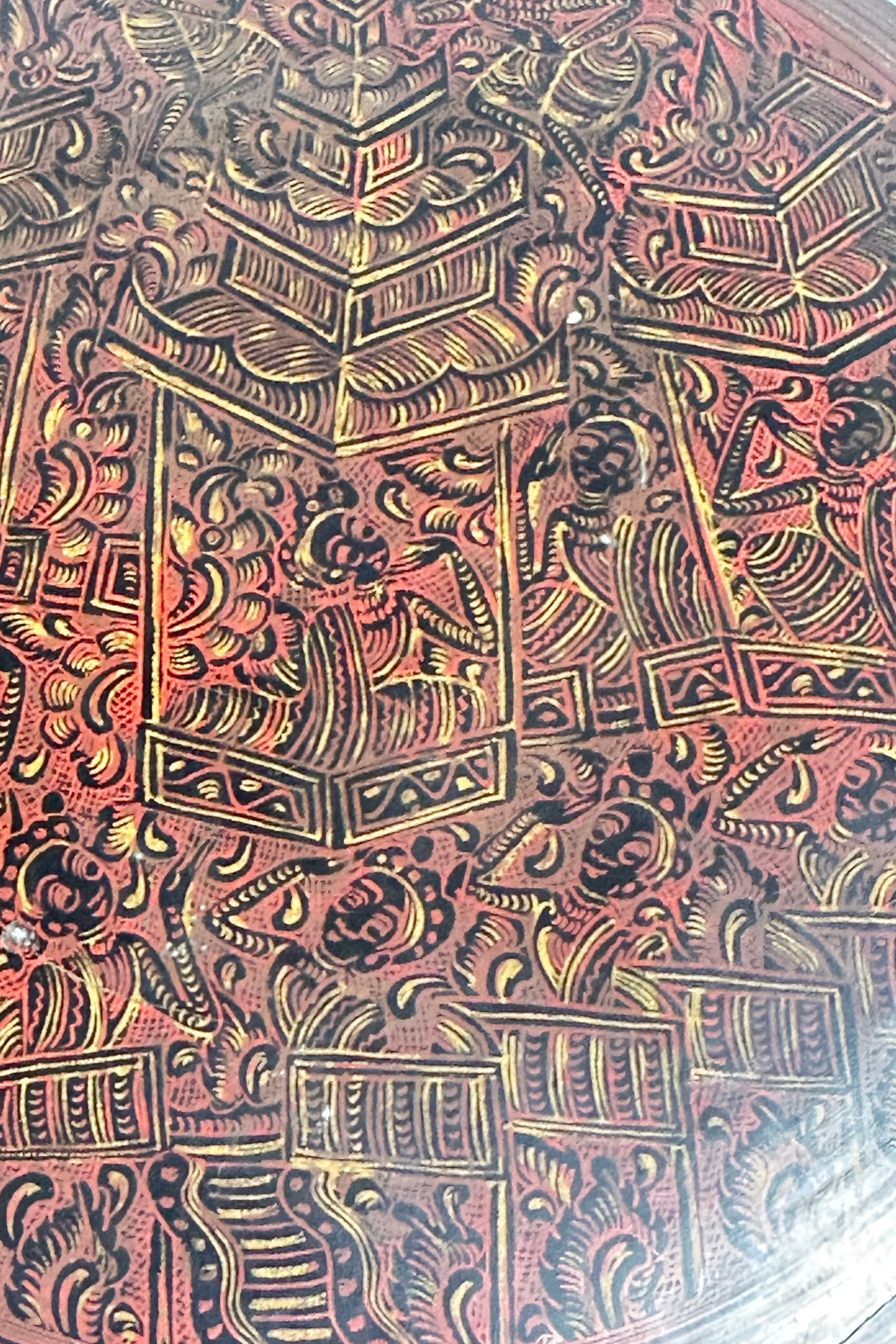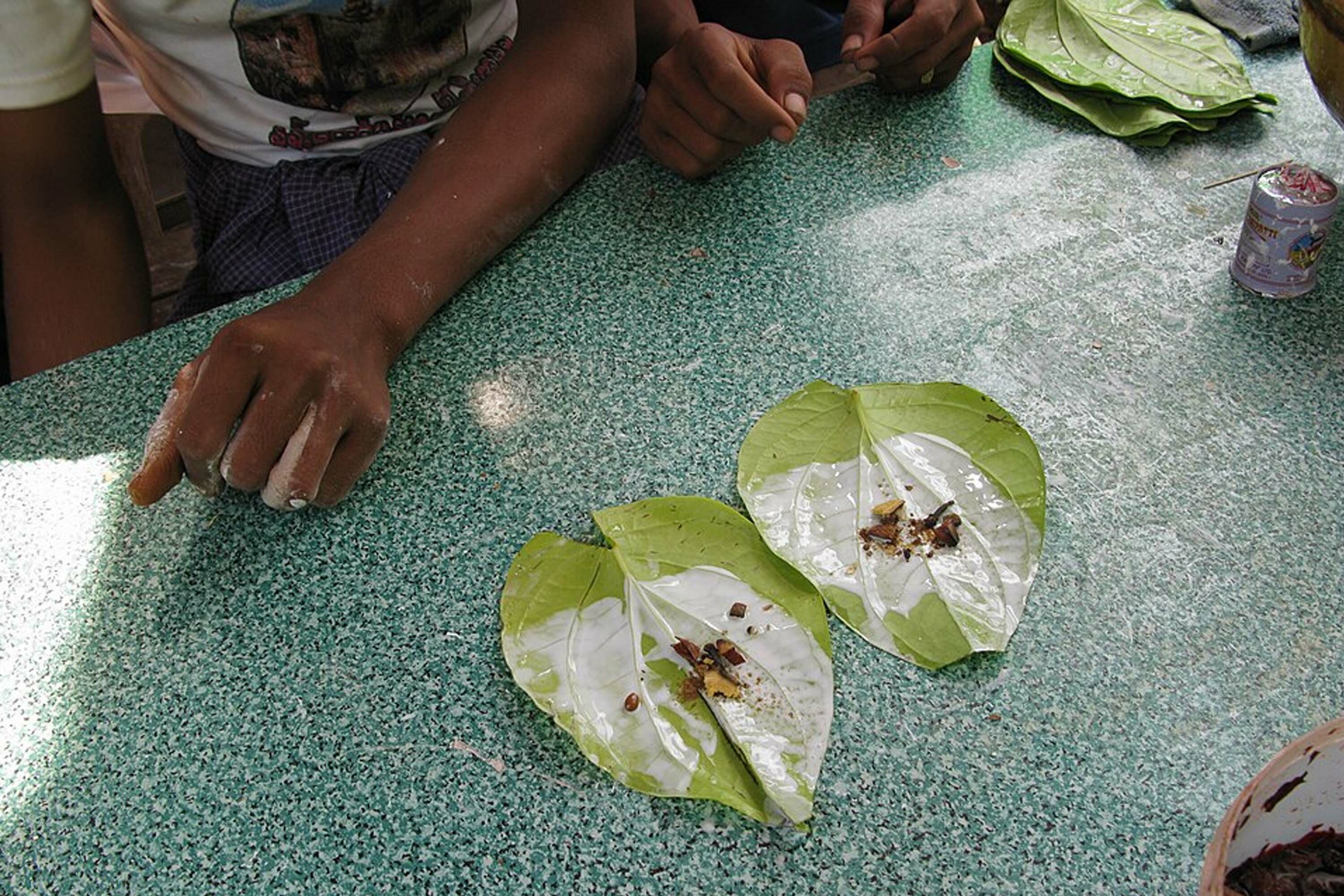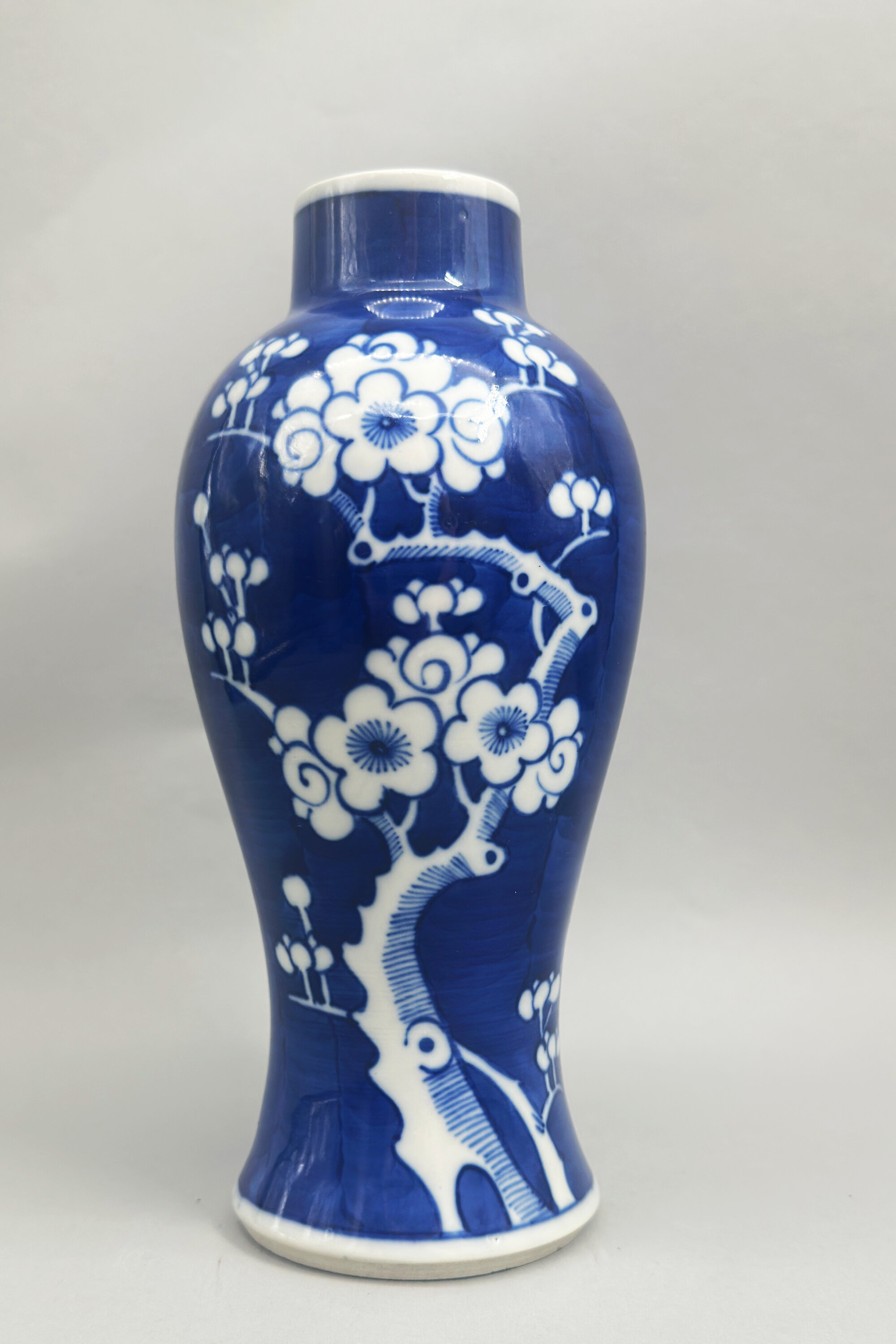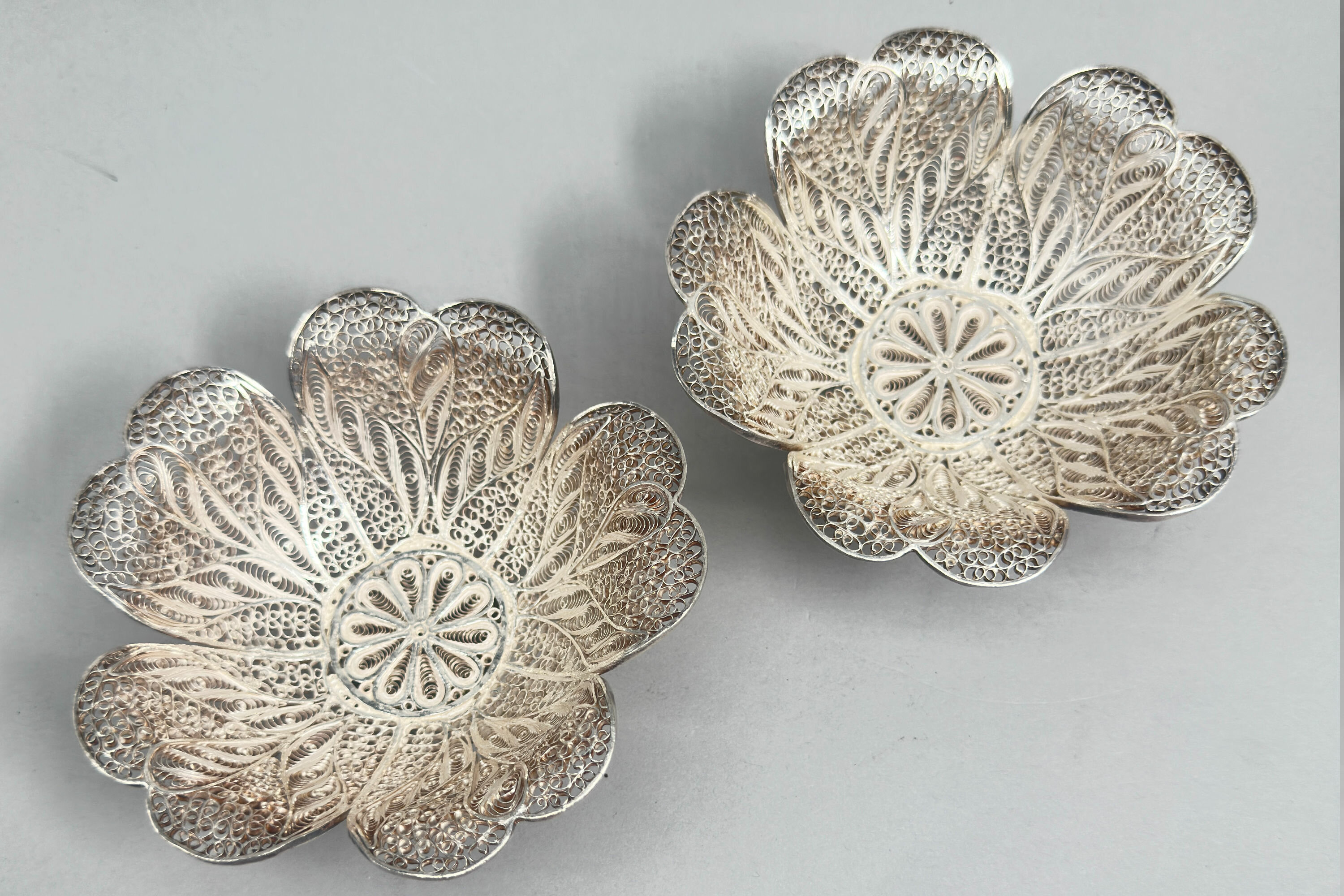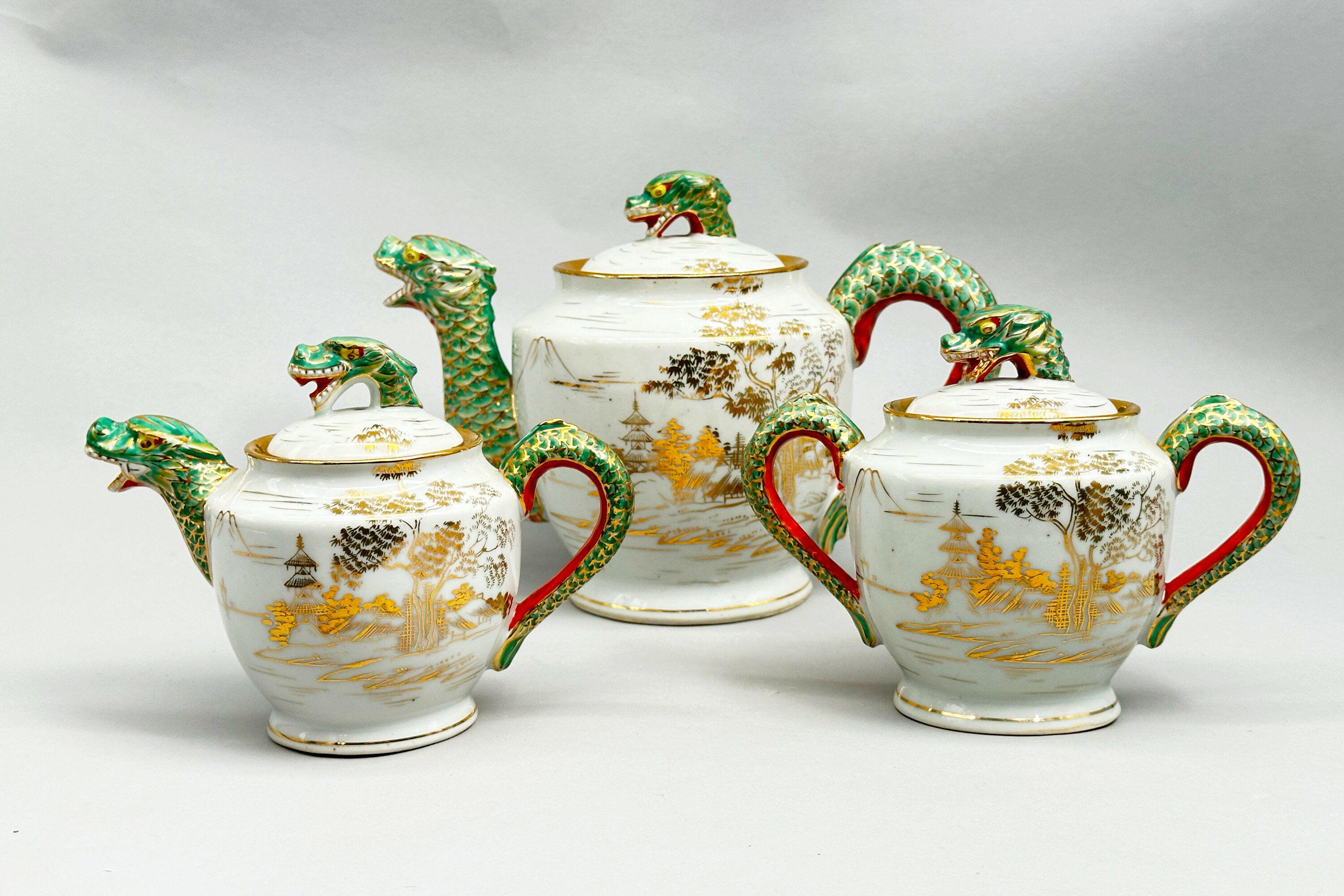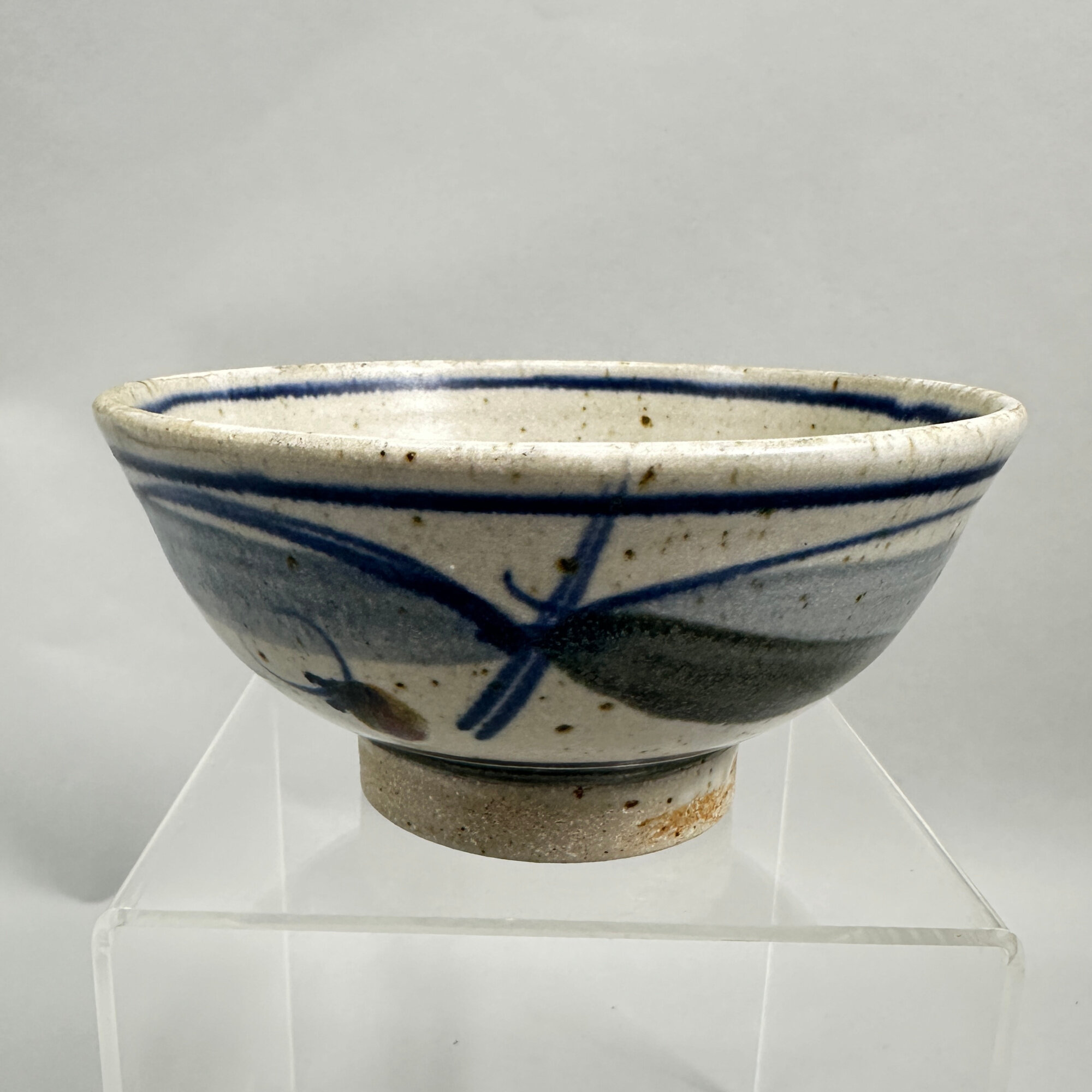Burmese Lacquer Three Section Betel Box, early C20th
| Starting Bid: | £40.00 |
| Bid Increment: | £2.00 |
| Next Min Bid: | £42.00 |
| Buyer’s Premium: | £9.60 |
| Total Amount: | £49.60 |
| Number of Bids: | 0 |
| Location: | United Kingdom |
| Highest Bidder: | |
| Auction Start: | 21/07/25 19:00:00 UTC |
| Auction Ending: | 05/08/25 19:34:00 UTC |
| Time Remaining: | 9d 20h 6m |
Burmese Lacquer Three Section Betel Box, early C20th
This is a typical example of the so called ‘betel box’ which was a feature of so many of the homes in Burmah in the late nineteenth and early twentieth centuries. The betel nut, in fact a form of berry, comes from the Areca palm and, wrapped in betel leaves, often with added ingredients, is chewed as a stimulant, although both addictive and with potentially adverse side effects it is not necessarily conducive to good health. ‘Betel boxes’ were used to store the ingredients for making a betel ‘quid’, the leaves being stored in the lower compartment and the upper compartment filled with small tins, often made of silver in the wealthier homes, containing various other ingredients such as the betel ‘nuts’ themselves, slaked lime, anise seed and a varying range of other spices (see image 16). A guest would be offered the host’s box to sample along with tea and cheroot.The betel box seems to be mainly confined to Burmah, now Myanmar, and was normally made using the lacquer techniques for which the country was so well known. A woven bamboo, or sometimes cane or wood, base (which can be seen here where the lacquer has flaked away : see image 12) was covered in multiple layers of lacquer paste, each allowed to dry and then polished, and finally the piece was decorated. The format here is typical : an upper section with a tray on top covered by a lid which fits on to a lower section also with a tray on the top. The trays are coloured red on the inside and black on the outside, the lid and the boxes orange on the inside. The exterior decoration of the two section body and the base of the lid employs a wide mixture of narrow bands, some indented and some raised, with a broader band of repeated stylised floral decoration at the top and another with modelled vertical line decoration below. The base is slightly flared and the lid slightly very slightly domed. The top of the lid has a densely packed design comprising temples and dancing figures and the base a design of circles and waves. As with many of these boxes great care was taken in the ornamentation and this example was, perhaps, made for one of the wealthier households.
Dating of these boxes is put in the early years of the twentieth century and they survive as a memento of a tradition which is still practised, but with less elaborate accessories, in the present day.
| Size: | H 17.5 cm, Diameter 18 cm |
| Weight: | 710 grams |
| Date: | Early C20th |
| Condition: | Various typical losses and damage to the lacquer decoration (see images). Please enquire for more detail. |
| Estimate: | £80 – 120 |
